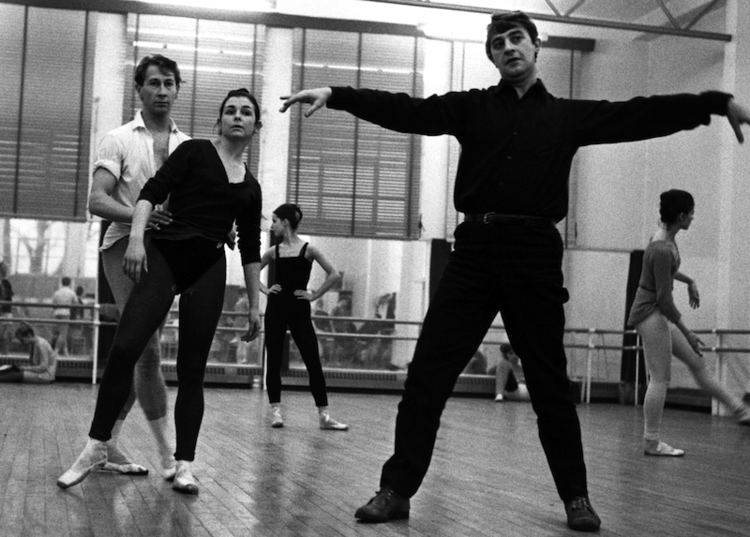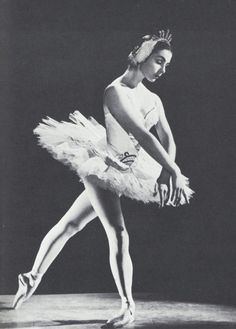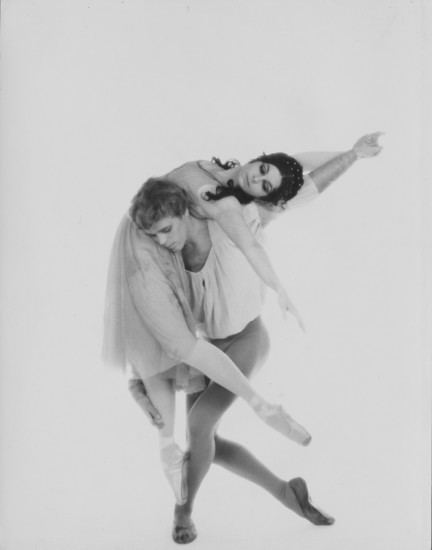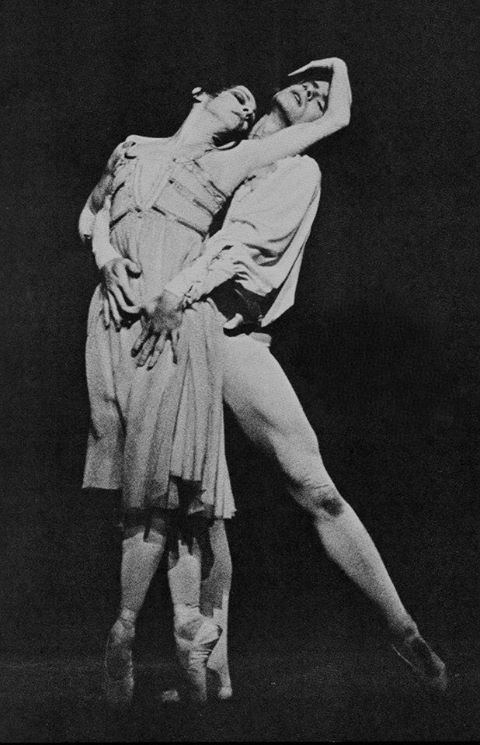Occupation Ballet dancer Name Lynn Seymour | Role Ballerina | |
 | ||
Full Name Berta Lynn Springbett Movies I am a Dancer, Dancers, Giselle Nominations Laurence Olivier Award for Outstanding Achievement in Dance Similar People Ninette de Valois, Rudolf Nureyev, Herbert Ross, Pierre Jourdan | ||
Lynn seymour david wall romeo and juliet bedroom pdd
Lynn Seymour (born 8 March 1939) is a retired Canadian-born ballerina and choreographer.
Contents
- Lynn seymour david wall romeo and juliet bedroom pdd
- Dance ballerina dance 2 deborah bull adam cooper lynn seymour
- Early career
- International fame and choreography
- Directorship and subsequent career
- Private life
- References
Dance ballerina dance 2 deborah bull adam cooper lynn seymour
Early career

She was born Berta Lynn Springbett in Wainwright, Alberta, and studied ballet in Vancouver.

In 1953 she was auditioned by Frederick Ashton and given a scholarship to London's Sadler's Wells Ballet School. There she was in a class with Antoinette Sibley and Marcia Haydée - "perhaps the greatest constellation of talent ever seen in one classroom".

In 1956 she joined Covent Garden Opera Ballet, then moved to the Touring Royal Ballet in 1957 and a year later to the main company of the Royal Ballet as a soloist dancer, becoming a principal in 1959.

Her first created role was the Adolescent in Kenneth MacMillan's The Burrow (1958), one of many ballets on which she worked with this choreographer: her lyrical technique, her unconventional style and the very intense dramatic powers were developed through the wide range of roles he made on her including The Girl in The Invitation (1960) and The Fiancé in Le baiser de la fée (1960) - which is shown in the picture above.

She soon debuted in the classics by dancing Odette-Odile (1958, on tour in Australia), Giselle and Aurora (both 1960) and was the Young Girl in Ashton's comedy ballet The Two Pigeons (1961) in which she began a much praised partnership with Christopher Gable.
International fame and choreography
The title role in MacMillan's Romeo and Juliet (1965, thought especially for her but danced by Margot Fonteyn at the première) established her as the leading dance-actress of her generation.
She was prima ballerina at Berlin Opera Ballet (1966–69) under MacMillan's direction; here she danced the first performance of his Concerto (whose second movement was inspired by her) and created the role of Anna Anderson in the one-act version of Anastasia (1967).
She guested with various companies including London Festival Ballet, London Contemporary Dance Theatre, National Ballet of Canada, Alvin Ailey American Dance Theater and American Ballet Theatre. She worked with different choreographers from Antony Tudor and Jerome Robbins to Lar Lubovitch and Roland Petit and was often partnered by her dear friend Rudolf Nureyev (La Sylphide, Raymonda and others). With Nureyev she improved her technique by attending the class of Danish teacher Stanley Williams (ballet).
In 1971 she returned to the Royal Ballet as a guest artist (until 1978) with new MacMillan tempestous characters such as the Grand Duchess Anastasia in the three-act version (1971) and Mary Vetsera in Mayerling (1978, with David Wall as Crown Prince Rudolf); Ashton created for her a very successful solo called Five Brahms waltzes in the manner of Isadora Duncan (1975) and the role of Natalia Petrovna in A Month in the Country (1976, with Anthony Dowell as Beliaev).
She was herself a choreographer: in 1973 she made her first ballet for the Royal Ballet Choreographic Group - Night Ride (mus. Finnissy). Her other works include Gladly, Sadly, Badly, Madly for LCDT (mus. Davis, 1975), Intimate Letters for Galina Samsova (mus.Janacek, 1978), Wolfie for Rambert Dance Company (mus. Mozart, 1987) and Bastet for Sadler's Wells Royal Ballet (mus. Berkeley, 1988).
Directorship and subsequent career
She was artistic director of Munich State Ballet (1978–80) where she invited a young William Forsythe (choreographer), then she briefly returned to the Royal Ballet before retiring (1981) and working there subsequently as occasional coach.
She appeared as an actress in the Herbert Ross 1987 movie Dancers with Mikhail Baryshnikov and in Wittgenstein by Derek Jarman (1993) playing the part of Ballets Russes's Lydia Lopokova; she came back to the stage with a number of cameo roles: in Gillian Lynne's A Simple Man with Northern Ballet Theatre (1987), in Escape at Sea with Second Stride (1993) and with Adventures in Motion Pictures in Matthew Bourne's Swan Lake (1996) and Cinderella (1997) in which she originated the role of the Stepmother.
In 1989, at the invitation of Peter Schaufuss of the English National Ballet, she came out of retirement to dance for the first time Tatiana in John Cranko's Onegin in London and again the title role of MacMillan's Anastasia in New York.
In 2006-07, she worked in Athens as artistic director of the Greek National Ballet.
She was invested by CBE in 1976 and won the Evening Standard Drama Award the following year. Named in honour of her, the Lynn Seymour Award for Expressive Dance is annually held at the Royal Ballet School.
Private life
Seymour married three times and had three children: twin boys by a Polish dancer whom she did not marry, and a son by her second husband.
